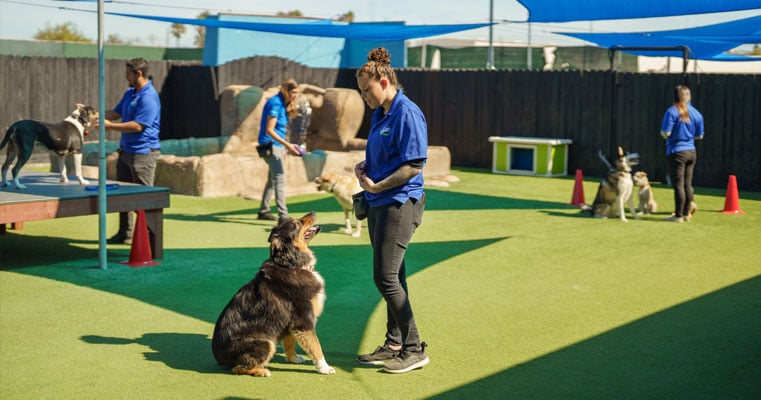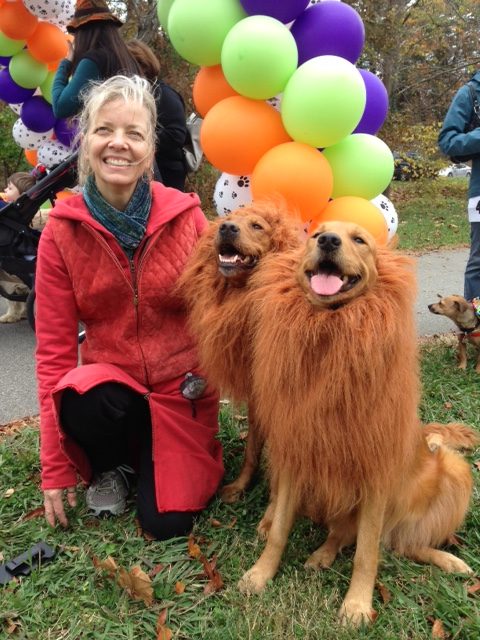The Advantages of Very Early Dog Training for a Well-Behaved Family pet
The Advantages of Very Early Dog Training for a Well-Behaved Family pet
Blog Article
Important Tips for Successful Dog Training: An Overview for Family Pet Owners
Reliable pet dog training is a multifaceted process that needs a tactical approach tailored to both the pet dog's temperament and the proprietor's objectives. Secret components such as developing consistent commands, using positive support, and promoting early socializing play important duties in fostering a well-adjusted canine companion. Nevertheless, many family pet proprietors encounter difficulties that can prevent progression, causing frustration and uncertainty. Recognizing how to browse these challenges can significantly boost the training experience, ultimately transforming the connection in between proprietor and dog. What are the crucial approaches that can be employed to guarantee success in this venture?
Comprehending Canine Actions
Recognizing pet behavior is important for effective training and cultivating a harmonious relationship in between dogs and their owners. Pet dogs connect mainly via body movement, vocalizations, and actions, making it crucial for owners to translate these signals precisely. Recognizing a dog's pose, tail placement, and ear alignment can provide insights right into its emotion. As an example, a wagging tail does not always indicate joy; it can also signify enjoyment or anxiousness.

Socialization plays a substantial role in canine habits; exposure to various atmospheres, individuals, and various other pets can dramatically impact a pet dog's personality. Aspects such as breed attributes and specific temperament should direct training approaches, as some breeds may have details behavior attributes that necessitate customized methods. By recognizing these elements, proprietors can create a supportive environment that encourages favorable habits, bring about effective training end results and a much deeper bond with their family pets.
Establishing Regular Commands
Efficient communication with your dog begins with establishing constant commands. This foundational aspect of training is important for fostering understanding between you and your pet dog. Consistency in the commands you utilize makes certain that your dog can reliably associate certain words or expressions with the wanted actions.
When picking commands, select clear, unique words that are very easy to distinguish and state from each other. Prevent utilizing similar-sounding commands that may puzzle your dog. For instance, utilizing "sit" and "remain" is proper, however "rest" and "hit" might cause misunderstandings.
Furthermore, keep the very same tone and volume for every command. Pet dogs are delicate to vocal hints, so differing your tone can create confusion.
It is similarly important to ensure that all member of the family are on the same page regarding the commands made use of. A united front in command usage will avoid blended signals and enhance the discovering procedure.
Favorable Support Techniques
The power of favorable reinforcement in pet dog training depends on its capability to urge wanted actions through incentives and praise. This strategy is grounded in the concept that actions followed by desirable end results are more probable to be repeated. By integrating positive reinforcement right into your training routine, you can efficiently form your canine's behavior in a useful manner.
To execute favorable support, it's important to identify what inspires your canine, whether it be deals with, playthings, or verbal praise. When your pet dog executes a wanted action, such as resting on command, right away award them with a reward or love. This organization in between the command and the favorable outcome strengthens their understanding.
It's important to timing the incentives appropriately; providing the reinforcement within secs of the wanted behavior aids your canine make the connection (dog training). In addition, consistency is essential-- guarantee that all member of the family utilize the very same commands and reward systems to prevent confusion

Progressively, you can decrease the frequency of treats as your pet dog learns the habits, transitioning to commend or recurring rewards. This approach not just promotes a solid bond between you and your pet however additionally promotes a positive discovering setting, making training an enjoyable experience for both.
Socialization and Communication
Continually subjecting your pet to a selection of settings, people, and other pets is important for their social growth. Socializing should begin early, preferably during the vital window of 3 to 14 weeks, when young puppies are most receptive to new experiences. However, older pets can additionally take advantage of continuous socialization initiatives.
Present your pet dog to various settings, such as parks, pet-friendly shops, and urban locations. This exposure helps them adjust to various stimulations, reducing anxiety and worry responses. Urge positive interactions with various other canines and individuals, guaranteeing that these experiences are risk-free and regulated to cultivate self-confidence.
Utilize organized playdates with well-mannered canines, as this can enhance your canine's social skills and show them appropriate actions. Obedience courses and training sessions likewise give excellent opportunities for socialization, allowing your pet to interact with others in a supervised environment.
Screen your pet's body movement throughout interactions, as this will assist you evaluate their comfort level. Gradually raise direct exposure to even more difficult circumstances while making sure that each experience declares. A well-socialized dog is more most likely to show balanced habits, making them a pleasure to have in any kind of setting.
Dealing With Usual Training Difficulties
Every pet proprietor will certainly run into training difficulties at some factor, no matter of their dog's age or socialization degree. Recognizing typical issues such as stubbornness, diversions, internet and terror can aid in establishing reliable methods for enhancement.

Progressively present distractions as the canine becomes a lot more competent in commands. Short, regular training sessions are likewise efficient in preserving attention.
Fearfulness can impede a dog's discovering procedure. Steady desensitization to the source of anxiety, matched with favorable support, can aid alleviate anxiety. Persistence is vital; never force a pet dog right into a situation that triggers distress, as this might aggravate the problem.
Eventually, understanding and Continue dealing with these typical challenges with a structured strategy will certainly cultivate a more effective training experience, reinforcing the bond in between pet dog and proprietor while promoting effective discovering.
Conclusion
In summary, successful dog training counts on a thorough understanding of canine habits, the establishment of regular commands, and the application of favorable reinforcement strategies. Socializing plays a critical duty in establishing well-adjusted pets, while resolving common training challenges requires persistence and adaptability. By carrying out these crucial techniques, animal owners can cultivate a solid bond with their dogs and promote preferable behaviors, inevitably resulting in a harmonious connection between humans and their canine friends.
Understanding canine actions is important for reliable training and fostering an unified partnership between canines and their owners.Socialization plays a significant function in dog behavior; direct exposure to various settings, individuals, and various other pets can substantially influence a pet's personality.The power of positive reinforcement in canine training exists in its my blog capability to motivate desired behaviors with benefits and praise. By including positive reinforcement right into your training regimen, you can successfully shape your pet dog's behavior in a positive fashion.
In summary, effective dog training relies on a comprehensive understanding of canine actions, the establishment of regular commands, and the application of positive support strategies.
Report this page